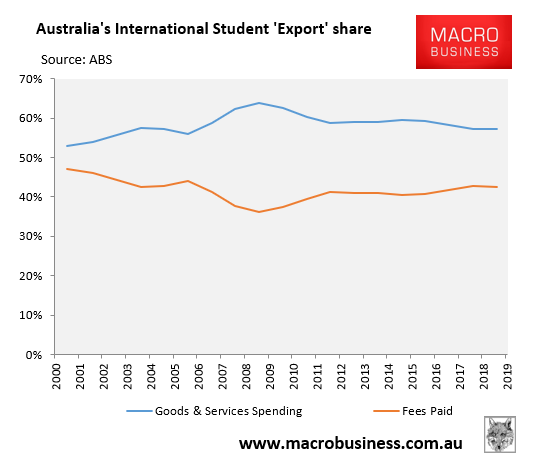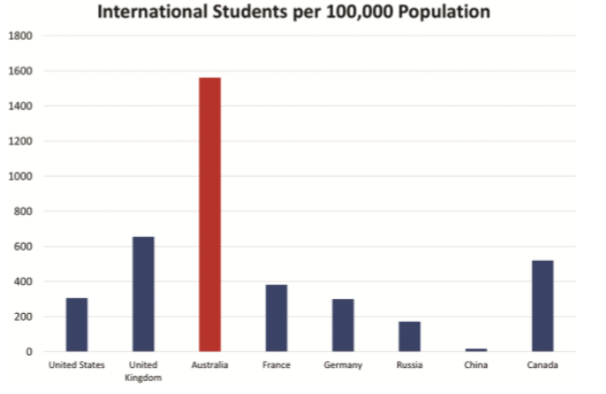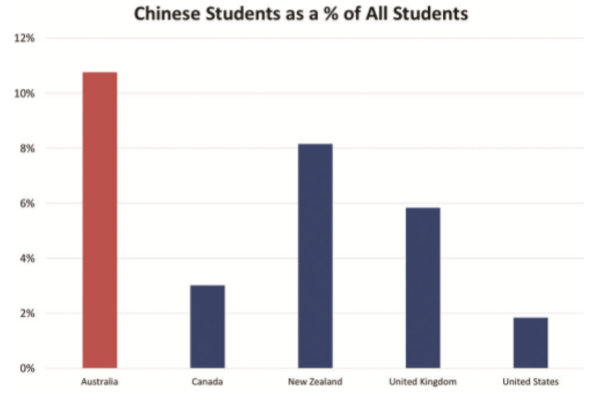Former Victorian Premier turned chancellor of Victoria University and chair of the International Education Advisory Council of Victoria, John Brumby, has penned a long-winded opinion piece in Fairfax defending the extreme concentration of international students at Australian universities and calling for policy makers to reinvigorate the industry.
Brumby’s key points are as follows:
- International education is Australia’s fourth largest export, despite the COVID-19 pandemic;
- Australia does not have an overconcentration of students from China. Australia’s share of education exports to China (31%) are less than its traded goods exports to China (48.8%). So “why is international education so often singled out as being ‘too reliant’ on China? … And why should we want to replace it?”.
- International students provide many broader economic benefits to Australia. They spend money here, they live here, they become permanent residents, they alleviate skills shortages, and they support 250,000 jobs.
- More than half of university research funding each year relies on international student fees.
John Brumby ends the article by stating that Australia would be making a grave mistake by trying to diversify education exports away from China:
Australia would be making a terrible mistake to discard old friends and markets in the name of ‘diversification’… let’s recognise that there are still many young Chinese people looking for a quality, affordable and safe place to study. Australia can offer just that. We should continue to do so.
Like all commentators and lobbyists in this space, John Brumby has only looked at the benefits of Australia’s international student trade while entirely ignoring the costs. This is not the way that public policy should operate.
Education exports grossly exaggerated
Brumby’s claim that international education is Australia’s fourth biggest export is grossly exaggerated. According to the Australian Bureau of Statistics’ (ABS) own data, goods and services expenditure accounted accounts for the majority (~60%) of total education exports, whereas fees paid by international students accounted for just over 40% of these exports:

These ‘exports’ are grossly overstated because they include expenditure paid for via income earned by students while working in Australia. According to survey data, around two-thirds of international students work while they study here, meaning that any subsequent expenditure is by definition not an actual ‘export’, but rather just economic activity.
By extension, John Brumby’s claim that international students support 250,000 jobs is also one-sided because it doesn’t account for the jobs that international students ‘take’. Given there were around 500,000 student visas on issue at the end of 2019, and around two-thirds of international students work while living in Australia, they very likely take more jobs than they create.
Australia’s concentration of international students too high
Australia’s absurd concentration of international students, and Chinese students in particular, was illustrated clearly by Professor Salvatore Babones’ seminal 2019 study entitled “The China Student Boom and the Risks It Poses to Australian Universities”.
This report showed that Australia’s concentration of international students was roughly 2.5 times the United Kingdom’s, three times Canada’s, and six times the United States’:
In a similar vein, Chinese students occupied around 11% of places at Australian universities – a concentration way above other nations’:
Sure, Australia’s concentration of commodity exports to China might be higher, but these do not involve actual Chinese living in Australia, nor CCP-run Confucius Institutes operating at Australian universities threatening our democratic values and freedom of speech.
Costs of international students ignored
The broader costs (negative externalities) of Australia’s extreme concentration of international students has been ignored entirely by John Brumby, including:
- Erosion of entry and teaching standards at universities, as documented in 2019’s Four Corners report and elsewhere.
- Negative impacts on the labour market given students are allowed to work. These students are vulnerable and tend to come here with little money. They are ground zero for wage underpayment and theft, and contribute to Australia’s chronically poor wages growth. They are a key part of Australia’s broader immigration story.
- Erosion of freedom of speech: as witnessed at UQ with the Drew Pavlou affair. We’ve got 13 CCP-run Confucius Institutes operating at Australia’s universities.
International students have become Australia’s major funnel to our immigration program. Many come here primarily for work rights and/or permanent residency, rather than to obtain an education. In turn, Australia’s universities have basically become ‘middle-men’ to the immigration system, behaving more like migration agents and degree factories to maximise student fees. They’ve lowered entry standards to maximise student numbers. Cheating is rife. There’s immense pressure on staff to pass these students. And the net result is a lower quality system.
When one considers the costs associated with the international student trade, the notion of an international student ‘boom’ becomes very questionable.
How to fix the international education system
Australia’s international education system could be improved by targeting a smaller intake of higher quality students via:
- Raising entry standards (particularly English-language proficiency);
- Raising financial requirements needed to enter Australia; and
- Removing the link between studying, work rights and permanent residency.
These reforms would lift student quality, would raise export revenues per student, and would lower enrolment numbers to sensible and sustainable levels that are more in line with international norms.
They would also help to improve teaching standards and the experience for domestic students, which should be our universities’ number one priority.
We must restore Australia’s universities back to being about ‘higher learning’ rather than ‘higher earning’.



